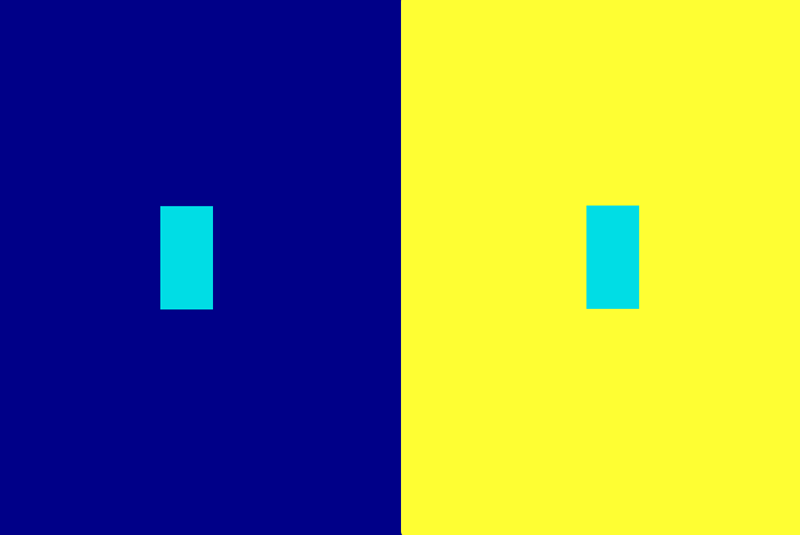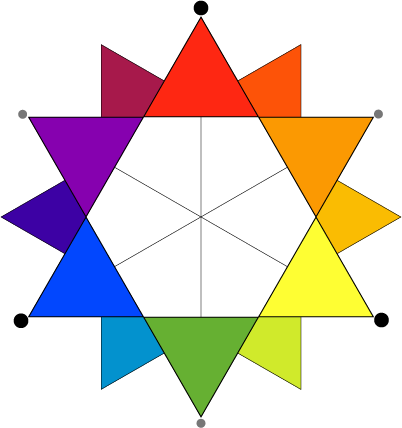Color Math

07 October 2021
Color Subtraction - Get a color superpower
Color Subtraction - Get a color superpower
Color - Relationships and Influencers
Color Subtraction is about the relationships of colors to each other, and how they influence each other. Even your favorite color is influenced by its relationship to other colors nearby.
We’re not usually aware of color subtraction, it’s just something our eyes and brains do. We’re hardwired for it. In fact, we humans can’t really even see one, and only one, color. More on this in another blog post.
There is a long list of color attributes at play with the mechanics of color subtraction, but for this moment we need only look at hue, saturation and volume.
Note: this eye-brain operation is a different experience for people who are color-blind. Color-blindness is not blindness, it’s just a difference in how those individuals see color. There’s information on the web, if you’re interested. But to manage expectations: if you’re color-blind these exercises and concepts probably won’t work for you in the same way.
How Does It Work?
Let us venture into the RYB (red-yellow-blue) color model we use for art and paints. Remember the ol’ color wheel? Yikes! Just kidding, it’s not scary.
We see Color Subtraction at work in the image above with a small patch of color (we’ll call it aqua) in a field of a deep "pure" blue, and next to it the same aqua color inside a color field of a yellow.
Do you see it? You can enhance the effect by trying to focus on both aqua patches at once. The aqua inside the yellow field looks a little more blue and slightly darker than the aqua inside the darker blue field. Whaaaa?
Let’s take it apart
The patch in the center of both color fields is in fact exactly the same aqua.
To break down the thing, let’s do some ‘mind-mixing’ of the three color blocks involved here. What we’re looking for is the location of each of our three color patches on the color wheel, so that we can identify the color mix amounts of each.
I should pause here to note that this is a visual and conceptual exercise. In the practical world of physical mediums, while you can certainly mix a blue paint with a yellow paint and get a green, you'll achieve a greaterchoice of colors using manufactured or even hand-crafted materials made with actual pigments. (The reason is a whole different blog post.)
Also, I'm presenting a color concept for use with physical mediums using a RYB color model, but on a digital medium that actually uses a RGB (red-green-blue) color model. Oddly the theory still translates well enough.
In our example above, the aqua (or blue-green or whatever you want to call it), lives part-way between blue and green. Green is a Secondary color mix of yellow + blue. So the aqua is really a primary blue that contains some yellow, but lives closer to blue.
With me so far?

Look at the color star to fix this in your mind. Just locate the colors and their position around the circle for now.
For anyone just arriving from a distant planet, here's a color-wheel refresher:
Primary colors are Red, Yellow and Blue (black dots). You may recall that Primary colors reflected as light waves and mixed in equal parts make White.
Secondary colors (gray dots) are a mix of two adjacent primary colors.
Tertiary colors (unmarked) are a mix of a Secondary color with an adjacent Primary color.
Of course, if you’re not human, are you really reading this post? But I digress.
The Operation: How Color Subtracts
Back to our example
The small aqua patch is surrounded by a large field of yellow. The yellow field is large enough to be dominant. Dominant colors pull their own color from colors in relative proximity. They subtract themselves from other colors nearby. So the big yellow field is sucking its own yellow self from the aqua, leaving more blue in the aqua.
Give yourself a minute here. Breathe. It will come.
On the blue field, the same exact aqua color appears slightly more yellow-green. Can you work it out?
If you figured out that the dominant blue field is pulling the blue out of the aqua --> leaving more yellow in the aqua --> which mixes with the aqua's blue to make it appear greener, you’re right! Congratulations! You’ve just learned some deep color theory.
This analysis can be a tricky mind-warp, especially when we’re trying to figure out what color to put on a brush or to mix on the palette and put down in the painting in the heat of the moment, or trying to solve for why the composition just isn’t working.
Practice Practice Practice
Exercises To Help You Push and Pull Colors, using Color Subtraction
It gets easier with practice. You won't always have to think it through. The understanding eventually goes into your muscle cell memory somewhere, and reaching for a color solution becomes intuitive.
- Have a RYB color wheel nearby for speedy reference. It doesn’t have to be fancy. You can make a quick one on the fly. Or download mine and stick it on your phone or pad. I know, the color wheel seems like an embarrassing beginner exercise, but Color Subtraction is a visual problem. Having a visual tool to help us develop our color skills just makes sense.
- Take some time to play. Set up some color puzzles like this for yourself to solve. Colored paper pieces won’t vary as much as a brushed-on paint, or you can tear up magazine or mail-catalog pages and use a glue-stick. Or use your favorite medium and apply as opaquely and evenly as possible.
- Or if you’re a Photoshop user, set up some images and play around with different color combinations to see what happens.
- If you arrive in a stuck moment working on a piece in studio or in the field, and you're not sure about what color will work, take some time to asses the dominant colors in the area. Then use your color wheel to visually think through how that color might be influencing other colors.
Use your color practice tools like practicing scales and chords and patterns, if you play music. It’s not music yet, but the practice gives us building blocks and puts the music in our fingers.
I promise you, once gained, this color tool will strengthen your color decisions, and will charge up your color superpower!